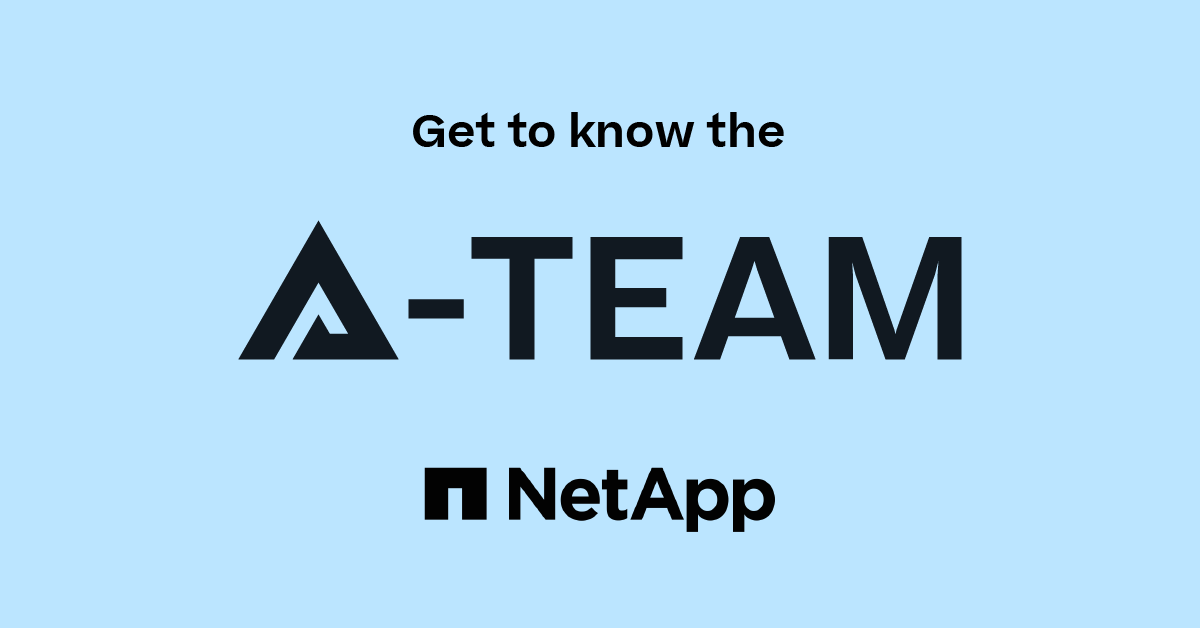General Discussion
- Home
- :
- General Discussion & Community Support
- :
- General Discussion
- :
- Re: FlexGroup Volumes and SnapMIrror Resync
General Discussion
- Subscribe to RSS Feed
- Mark Topic as New
- Mark Topic as Read
- Float this Topic for Current User
- Bookmark
- Subscribe
- Mute
- Printer Friendly Page
- Mark as New
- Bookmark
- Subscribe
- Mute
- Subscribe to RSS Feed
- Permalink
- Report Inappropriate Content
Documentation for SnapMirror states:
"For Infinite Volumes and Vservers, you must create SnapMirror relationships between Infinite Volumes or Vservers by using the snapmirror create command before you run the snapmirror resync command. The snapmirror resync command does not implicitly create the relationship."
Does this also apply for FlexGroup volumes? Ontap 9.1P16
I am deleting a relationship in order to be able to initialize the source FlexGroup data to a different destination. Since I can not have the same source be part of more than one relationship I will be deleting the existing relationship.
My requirement is to retain the current destination FlexGroup volume in the event I need to backout or revert to the original relationship as part of my backout plan - resyncing the source with the original destination after re-creating the relationship.
Solved! See The Solution
- Mark as New
- Bookmark
- Subscribe
- Mute
- Subscribe to RSS Feed
- Permalink
- Report Inappropriate Content
No worries. Sometimes it's difficult phrase questions precisely and also to understand it clearly.
Yes, the snapmirror create (for relationship) command and the conditions is same for all. i.e relationship should be re-created before resync.
Is that what you were trying to find out ?
- Mark as New
- Bookmark
- Subscribe
- Mute
- Subscribe to RSS Feed
- Permalink
- Report Inappropriate Content
This is based on the flexvol understanding but I am guessing (not 100% sure) it should work with flex-group as well.
The key switch to use when deleting relationship is to use use: '-relationship-info-only true' [With this switch : The cleanup of Snapshot copies is bypassed and only the source relationship information is removed.]
::> snapmirror release -destination-path svm_name:volume_name -relationship-info-only true
In Short: [You can do this by GUI as well)
1) Go to relationship tab.
2) Break it
3) Delete it, first check-box 'ok' to delete relationship (select that) but don't select another check-box 'ok to release base snapshot blah blah. This is equivalent to '-relationship-info-only true'. In other words, we want to keep the 'base-line snap' memory intact. This will allow you to have the destination volume data as well as all snaps intact.
4) Create a new relationship with destination and carry on from there.
If incase you want me to reverse then,
5) delete the new existing relationship ONLY.
6) Re-create the relationship between original source and original destination.
7) Go to GUI again, relationship tab - You should see the relationship you created in step 6.
From the GUI option : Select 'resync', this will re-enable the mirroring without baselining all the data.
This one has info on reversing or but you should be able to do regular forward resync:
https://docs.netapp.com/ontap-9/index.jsp?topic=%2Fcom.netapp.doc.pow-fg-mgmt%2FGUID-DF4362BB-245A-4D0A-BF3F-D9F4D5B2189C.html
- Mark as New
- Bookmark
- Subscribe
- Mute
- Subscribe to RSS Feed
- Permalink
- Report Inappropriate Content
Thank you for the detailed response. I may have over-stated my question in hopes of vetting the overall plan. But my basic question is this:
Given the excerpt from the documentation in my original post, does the same apply to FlexGroup volumes as is stated about Infinite Volumes in the documentation? Just looking for the yes/no answer.
Thanks again!
Greg
- Mark as New
- Bookmark
- Subscribe
- Mute
- Subscribe to RSS Feed
- Permalink
- Report Inappropriate Content
No worries. Sometimes it's difficult phrase questions precisely and also to understand it clearly.
Yes, the snapmirror create (for relationship) command and the conditions is same for all. i.e relationship should be re-created before resync.
Is that what you were trying to find out ?
